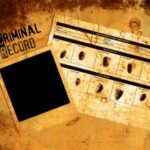Legal Procedure for Evicting a Tenant
Evicting a tenant can be a complex and often frustrating process, fraught with legal pitfalls. It’s not as simple as just changing the locks. A clear understanding of the legal procedures is crucial for both landlords and tenants to ensure a fair and lawful eviction. This guide will walk you through the essential steps, from serving the proper notice to navigating the court system, offering a roadmap to navigate this often-challenging terrain. We’ll cover everything from providing proper notice and understanding lease agreements to the final stages of legal proceedings.
Providing Proper Notice
Imagine your lease agreement as a contract, a two-way street where both landlord and tenant have responsibilities. A cornerstone of this contract is the notice period, the legally mandated timeframe a landlord must give a tenant before initiating eviction proceedings. Think of it as a courtesy heads-up, allowing the tenant time to prepare. This period, however, isn’t arbitrary; it’s dictated by specific laws and can vary significantly depending on your location and the reason for eviction. Failure to comply with these specific notice requirements can undermine your entire eviction case, potentially delaying the process by months and leading to unnecessary legal battles. So, what are the nuts and bolts of providing proper notice? Let’s dive in.
Firstly, understanding the reason for eviction is paramount. Is it for non-payment of rent? Is it due to a breach of the lease agreement, such as unauthorized pets or property damage? Or is it a no-fault eviction, perhaps due to the landlord’s intent to sell the property? Each scenario may require a different type of notice and timeframe. For example, a notice for non-payment of rent typically provides a shorter period for the tenant to rectify the situation compared to a notice for lease violations. Imagine trying to solve a puzzle with missing pieces – knowing the reason for eviction is like finding those missing pieces and putting them in place.
Secondly, the method of delivery matters. Simply slipping a note under the door often isn’t enough. Most jurisdictions require formal “service” of the notice, meaning it must be delivered in a legally acceptable way. This might involve personal hand delivery, certified mail with return receipt requested, or even posting the notice on the tenant’s door in specific circumstances. Think of it like sending an important package – you wouldn’t just leave it on the porch unattended. You’d want confirmation that it reached the intended recipient. Similarly, proper service ensures the tenant has undeniably received the notice, preventing them from claiming ignorance later on.
Thirdly, the content of the notice must be precise and legally sound. It should clearly state the reason for eviction, the date by which the tenant must vacate the premises, and any specific actions required by the tenant, such as paying overdue rent or rectifying a lease violation. It’s akin to a legal document; ambiguity can lead to misinterpretations and legal challenges. The notice should be crystal clear, leaving no room for doubt about the landlord’s intentions and the tenant’s obligations. Imagine receiving a coded message – confusing, right? A properly written eviction notice removes the guesswork and provides clear instructions.
Finally, landlords must meticulously document the entire process. Keep copies of the notice, proof of service, and any communication with the tenant. This documentation serves as crucial evidence should the case proceed to court. Imagine going to court without any receipts or evidence – you’d be at a significant disadvantage. Proper documentation is like building a solid case brick by brick, ensuring you’re prepared for any legal challenges.
Navigating the legal complexities of eviction can be a minefield, but understanding the nuances of providing proper notice is the first crucial step. By meticulously following the specific legal requirements of your jurisdiction, landlords can avoid costly delays and legal battles, ensuring a smooth and lawful eviction process. Don’t underestimate the importance of this initial stage – getting it right can set the stage for a successful resolution.
[Add other subtopics here with content]
Legal Procedure for Evicting a Tenant
Evicting a tenant can be a complex and often frustrating process, but understanding the proper legal procedures is crucial for landlords. We’ll guide you through the steps, from serving the initial notice to the final court order, providing you with the knowledge you need to navigate this tricky terrain. Just imagine, you’re a landlord trying to reclaim your property. Where do you even begin? Well, the first step typically involves providing a formal notice to your tenant, which we’ll cover in detail later. This article will detail the legal procedure for evicting a tenant, including filing the eviction lawsuit, serving the tenant, the court hearing, and the writ of possession. So, let’s dive in and untangle this legal web together.
Filing the Eviction Lawsuit
This section details the process of filing the necessary paperwork with the court to initiate the eviction proceedings. It’s like laying the foundation for a building – you need to get this right, or the whole thing could crumble. Filing the eviction lawsuit marks the official beginning of the legal eviction process. It’s the point of no return, so it’s vital you have all your ducks in a row. Think of it as the opening statement in a trial – it sets the stage for everything that follows. This involves preparing specific legal documents and lodging them with the appropriate court. While seemingly straightforward, this stage can be riddled with potential pitfalls if not handled meticulously. A single misstep, like an incorrect date or missing signature, can send you back to square one, costing you valuable time and money.
First, you’ll need to determine the correct court. Which court you file in depends on your jurisdiction and the specifics of your case – think things like the amount of rent owed or the type of lease agreement. Contacting the court clerk’s office directly or consulting with a legal professional can help ensure you select the right venue. Getting this wrong could result in your case being dismissed, so it’s worth taking the time to double-check. Imagine showing up for a play in the wrong theatre – you wouldn’t get very far, would you?
Next, you’ll need to draft the complaint. This document outlines the reasons for the eviction, such as non-payment of rent, breach of lease terms (like unauthorized pets or excessive noise), or holding over after the lease has expired. It’s essential to be precise and factual in your complaint, providing concrete evidence to support your claims. Think of it as building a case, brick by brick. Each piece of evidence, like rent receipts, bounced checks, photos of damages, or witness testimonies, strengthens your argument and increases your chances of success. Remember, this document is a formal legal declaration, so accuracy is paramount. Would you go to court without your key evidence? Of course not! So, ensure everything is thoroughly documented and readily available.
Once the complaint is drafted, it must be filed with the court, usually along with a filing fee. This fee varies by jurisdiction and can sometimes be waived in cases of financial hardship. The court clerk will provide you with a case number and a court date. This is the official start date of your eviction case, so mark your calendar! It’s the day you’ll present your case to the judge and hopefully secure a ruling in your favor. Imagine it as the grand finale of a performance – all your preparation culminates in this crucial moment.
Finally, after filing, you must officially serve the tenant with a copy of the complaint and a summons. This is a critical step, as it notifies the tenant of the pending legal action and gives them the opportunity to respond. Service must be performed according to specific legal requirements, which vary by state. In some jurisdictions, you can serve the tenant yourself, while others require service by a sheriff or a professional process server. Proper service ensures that the tenant is aware of the proceedings and can’t claim ignorance later on. Think of it as delivering a crucial message – it has to reach the intended recipient for it to have any effect. Isn’t that a logical expectation?
Legal Procedure for Evicting a Tenant
Evicting a tenant can be a complex and often frustrating process, a bit like navigating a legal maze. It’s crucial to follow the correct procedures to avoid legal pitfalls. Generally, the eviction process involves providing proper notice, filing a lawsuit if the tenant doesn’t leave, obtaining a court order, and then having law enforcement physically remove the tenant if necessary. But remember, the devil is in the details! State laws significantly impact each step. We’ll explore those nuances below, providing you with a roadmap to navigate this tricky terrain. What are the key legal considerations? How do you ensure you’re on the right side of the law? Let’s dive in.
State-Specific Eviction Laws
Imagine trying to solve a jigsaw puzzle where the pieces constantly change shape. That’s what navigating eviction laws across different states can feel like. It’s absolutely vital to understand and comply with the specific regulations in your jurisdiction. Why? Because the consequences of non-compliance can be severe, ranging from hefty fines to having your case thrown out of court. For instance, the required notice period before filing an eviction lawsuit can vary significantly. In some states, it might be 30 days, while others require 60 days or even more for certain lease violations. Similarly, the grounds for eviction – the reasons you can legally remove a tenant – differ from state to state. What constitutes a “just cause” eviction in California might not hold water in Texas. This is where things get tricky. You wouldn’t want to proceed with an eviction based on what your friend in another state told you, would you? Therefore, researching your state’s specific laws is paramount.
Beyond the notice period and grounds for eviction, other state-specific regulations govern the entire process. These regulations can dictate everything from how you serve the notice to quit to the specific forms you must file with the court. Some states require landlords to provide specific reasons for eviction in the notice, while others offer more leeway. For example, some states have specific rules regarding late fees, while others have stricter regulations on handling security deposits. Furthermore, certain states offer tenants more robust protections, making it more challenging for landlords to evict, even for legitimate reasons. Think of it like a game of chess – you need to know the rules of the game to play effectively. Overlooking these seemingly small details can have significant consequences, potentially delaying the eviction process or even derailing it altogether. So, where do you find this crucial information? A good starting point is your state’s housing authority or landlord-tenant association website.
To further illustrate the importance of state-specific laws, let’s consider the difference between a “no-cause” eviction and a “for-cause” eviction. A “no-cause” eviction typically occurs when a lease expires, and the landlord chooses not to renew it, requiring no specific reason. However, some states heavily restrict or outright prohibit no-cause evictions, particularly in cities with rent control ordinances. On the other hand, a “for-cause” eviction requires a specific reason, such as non-payment of rent, violating lease terms, or engaging in illegal activity on the property. Even within “for-cause” evictions, the specific procedures and evidence required can differ significantly. For instance, some states require landlords to provide extensive documentation of lease violations, while others may allow for a more streamlined process. Understanding these nuances is like knowing the terrain of a battlefield – it gives you a strategic advantage.
Navigating these legal intricacies can feel daunting. Consider consulting with a real estate attorney who specializes in landlord-tenant law. They can provide expert advice tailored to your specific situation and state laws, ensuring you don’t inadvertently step on any legal landmines. Think of it as having a seasoned guide leading you through a dense jungle – they know the safest path and can help you avoid dangerous pitfalls. While some landlords might be tempted to handle the eviction process themselves to save money, the cost of legal missteps can far outweigh the cost of professional advice. Remember, ignorance of the law is no excuse. Taking the time to understand and comply with state-specific eviction laws is not just a good idea – it’s a necessity.
Finally, remember that laws can be amended and updated. Don’t rely on outdated information. Always refer to the most current version of your state’s landlord-tenant laws or consult with a legal professional to ensure you’re operating within the legal boundaries. Keeping yourself informed is the best way to protect your rights and navigate the complexities of the eviction process successfully. After all, wouldn’t you rather be safe than sorry?


